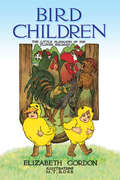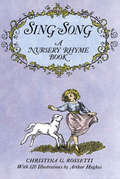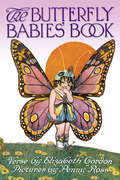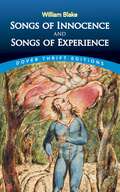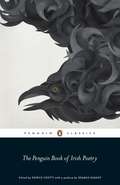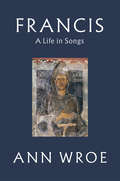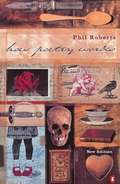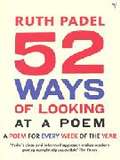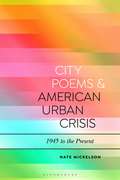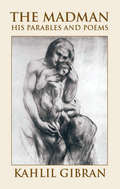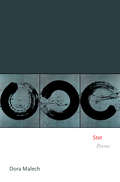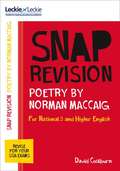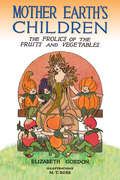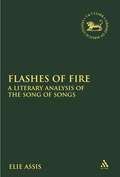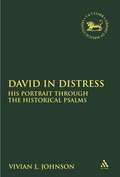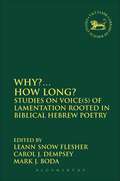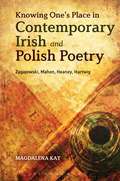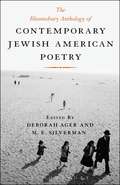- Table View
- List View
Bird Children: The Little Playmates of the Flower Children
by Elizabeth GordonSir Rooster is a noisy chap,He wakes you from your morning nap;He sleeps but little all night through,Crows at eleven, one and two.Brimming with antique charm, these fanciful verses and color illustrations from a century ago depict eighty-five varieties of birds. The winsome images portray men, women, and children as sparrows, storks, crows, penguins, and other familiar and exotic species. Each of the accompanying rhymes comments on the bird's habits and appearance.
A Shropshire Lad
by A. E. HousmanFew volumes of poetry in the English language have enjoyed as much success with both literary connoisseurs and the general reader as A. E. Housman's A Shropshire Lad, first published in 1896. Scholars and critics have seen in these timeless poems an elegance of taste and perfection of form and feeling comparable to the greatest of the classic. Yet their simple language, strong musical cadences and direct emotional appeal have won these works a wide audience among general readers as well.This finely produced volume, reprinted from an authoritative edition of A Shropshire Lad, contains all 63 original poems along with a new Index of First Lines and a brief new section of Notes to the Text. Here are poems that deal poignantly with the changing climate of friendship, the fading of youth, the vanity of dreams — poems that are among the most read, shared, and quoted in our language.
Sing-Song: A Nursery Rhyme Book (Dover Children's Classics)
by Christina G. RossettiGood poetry for children is rare. Few collections, few single poems in fact, survive beyond a few years of popularity. There are exceptions — the poetry and verse of Walter de la Mare, Lewis Carroll, and Edward Lear come to mind. Still rarer is successful children's poetry by a poet known equally for other work, such as Christina Rossetti. <p><p> These verses — deceptively simple, light, often like a nursery rhyme in character — consider such topics as childhood activities, children's cruelty and gentleness, roses and wild flowers, nesting birds and farm animals, cold winter and blossoming spring. Many pose riddles and conundrums ("A hill has no leg, but has a foot;/A wine-glass a stem, but not a root"). <p> This is the only edition in print to reproduce the poems with the illustrations which originally accompanied them. Engravings by Arthur Hughes, one of the best-known illustrators of the Victorian era, catch the mood of each verse. <p> Sing-Song is a fitting name for this collection: many of the verses capture the cadence of the ballad. Children will enjoy their music. Parents will find the simple content and lyrical language of the verses ideal for reading aloud.
The Butterfly Babies' Book
by Elizabeth GordonTo Mrs. Nettle, rough but kind,Red Admirals leave their babes to mind,And spend the golden summer hoursAmong the lovely garden flowers.Beautiful full-color illustrations and amusing verses recapture the magic and wonder of butterflies in this antique book from 1914. All of the baby butterfly characters are based on real species, and the text cites their common and scientific names and identifies the flowers and trees where they find food and shelter.
The Song of Hiawatha
by Henry Wadsworth LongfellowThe infectious rhythm of The Song of Hiawatha has captured the ears of millions. Once drawn in, they've stayed to hear about the young brave with the magic moccasins, who talks with animals and uses his supernatural gifts to bring peace and enlightenment to his people.America's most popular nineteenth-century poet, Henry Wadsworth Longfellow devoted himself to providing his country with a national mythology, poetic tradition, and epic forms. Known and loved by generations of schoolchildren for its evocative storytelling, his 1855 classic is regarded as a masterpiece of American literature, combining romance and idealism in an idyllic natural setting.
Songs of Kabir
by Rabindranath Tagore KabirA weaver by trade and a mystic by nature, the 15-century poet Kabir created timeless works of enlightenment that combine the philosophies of Sufism, Hinduism, and the Kabbala. Expressed in imagery drawn from common life and the universal experience, Kabir's poems possess an appealing simplicity. This collection of 100 songs reflects nearly every aspect of the mystic's thought and emotions: ecstasy and despair, tranquil beatitude and fervid illumination, and moments of intimate love. The acclaimed translation is by Rabindranath Tagore, a popular Indian poet and Nobel laureate.
Songs of Innocence and Songs of Experience: Shewing The Two Contrary States Of The Human Soul (Dover Thrift Editions)
by William BlakeAs both painter and poet, William Blake (1757–1827) was a powerful and visionary artist whose two early collections of poetry, Songs of Innocence and Songs of Experience, contain memorable lyric verses embodying the emerging spirit of Romanticism. <p><p> The two works were published together in 1794 with the subtitle, "Shewing the Two Contrary States of the Human Soul." The poems of Songs of Innocence describe childhood states of naturalness and purity in delicately beautiful lyrics that reveal a child's unspoiled and beatific view of life and human nature. In Songs of Experience the mood and tone darken, the poems suggesting the bitter corruptions and disillusionment that await the innocent. <p> The contrast between the two sets of lyrics is perhaps at its most acute in the poems "The Lamb" and "The Tyger," the latter ultimately expressing wonderment at the seemingly paradoxical coexistence of good and evil. The full texts of all the poems in the 1794 edition of both collections are included in this volume.
The Penguin Book of Irish Poetry
by Patrick CrottyThe Penguin Book of Irish Poetry features the work of the greatest Irish poets, from the monks of the ancient monasteries to the Nobel laureates W.B. Yeats and Seamus Heaney, from Jonathan Swift and Oliver Goldsmith to Eiléan Ní Chuilleanáin and Nuala Ní Dhomhnaill, along with a profusion of lyrics, love poems, satires, ballads and songs. Reflecting Ireland's complex past and lively present, this collection of Irish verse is an indispensable guide to the history, culture and romance of one of Europe's oldest civilizations. In his introduction to this new Penguin Classics edition, Patrick Crotty explores the traditions of poetry in Ireland, and relates the rich variety of the poems to the long and frequently troubled history of the island.
Shakespeare’s Sonnets, Retold: Classic Love Poems with a Modern Twist
by William Shakespeare James Anthony Stephen Fry'James Anthony has done something I would have confidently stated to be impossible. He has "translated" Shakespeare’s sonnets and he has done so with an insolent, loveable charm … A dazzling success’ – Stephen FryRediscover the greatest love poetry ever writtenShall I compare you to a summer’s day?You’re more delightful, always shining strong;High winds blow hard on flowering buds in May,And summer never seems to last that long…Shakespeare’s sonnets are some of the nation’s favourite lines of verse, but the Elizabethan language can make it difficult to really understand them. Many guides offer to clarify the meaning, but lose the magic of the words by explaining them away.James Anthony has done something boldly different.He has rewritten the whole series of poems as sonnets using modern language, while retaining the rhythm and rhyme patterns that gives them such power. In doing so he breathes new life into the original poems and opens them up for a modern readership, demystifying Shakespeare’s eternal poetry with provocative new translations and delightful new lines. Presented as an attractive book with the original sonnets facing their new translations, this is a stunning collection of beautiful love poems, made new.
Francis: A Life in Songs
by Ann WroeA life of St Francis in verseThroughout her career Ann Wroe has constantly confounded expectations, following her own unique path. Now, in Francis, she turns to verse to tell the life of St Francis of Assissi. This is a sequence only Ann Wroe could write, combining a troubadour’s musicality with full grasp of the moment, and a luminous sense of Francis as both myth and man, across history and culture, in nature and community. It is a remarkable and immensely beautiful book.St Francis was one of the most compelling spirits the world has seen. He was also a poet, a musician and a dancer. His world was coloured by troubadour lays, brightened by birdsong, ordered by the bells and chants of the Church and transfigured by the angel-lyres he heard about him. For Ann Wroe, this seems a good reason to write his life in songs. It is also an excuse to record, in songs, the many ways his presence and his music still linger round us. They surprise us in chance encounters in city streets; they waylay us amid the humdrum banalities of working life; they persist in the beauties of nature. Great spirits never leave us. They echo on and on.
How Poetry Works: The Elements Of English Poetry (PDF)
by Philip Davies RobertsIn this refreshing and inspiring book, Phil Roberts asserts that poetry, like music, is based on sound and so close attention should be paid to its rhythms and metrical patterns. He illustrates his points with lively examples ranging from nursery rhymes and limericks to recent experimental forms as well as familiar pieces from over the centuries. The book concludes with a Millennium Anthology, a salute to the poetry of the past thousand years, including pieces from England, Ireland, Scotland and Wales, as well as Australia, Canada, New Zealand and the USA.
52 Ways Of Looking At A Poem: A Poem For Every Week Of The Year (PDF)
by Ruth PadelEver wondered about how to really interpret poetry? Puzzled about metre, rhyming and stanzas? Presented in language thoroughly accessible for all, poet and writer Ruth Padel demystifies poetic style, structure and meaning in this comprehensive anthology of modern poems Based on the author's popular column in The Independent on Sunday, each poem is accompanied by an informative and entertaining explanatory excerpt by Padel. Featuring an assortment of contemporary poets from Carol Ann Duffy to Seamus Heaney, the collection thematically encompasses universal subjects of love, sex, family, death, as well as more obscure matters - for instance, loneliness when listening to the shipping forecast. A poem for each week of the year, Padel's exploration of the literary form expertly combines technical analysis with imaginative, creative interpretation - sure to make any reader fall in love with the modern verse.
City Poems and American Urban Crisis: 1945 to the Present (Bloomsbury Studies in Critical Poetics)
by Nate MickelsonFrom William Carlos Williams and Allen Ginsberg to Miguel Algarín and Wanda Coleman, this groundbreaking book explores the ways in which contemporary poets have engaged with America's changing urban experience since 1945. City Poems and American Urban Crisis brings post-war American poetry into conversation with developments in city planning, activism, and urban theory to demonstrate that taking city poetry seriously as a mode of analysis and critique can enhance our attempts to produce more just and equitable urban futures. Poets covered include: Miguel Algarín, Gwendolyn Brooks, Wanda Coleman, Allen Ginsberg, Lewis MacAdams, Charles Olson, George Oppen, and William Carlos Williams.
Little Orphant Annie and Other Poems
by James Whitcomb RileyFamous for his nostalgic poems invoking the people and places of rural Indiana, James Whitcomb Riley (1849–1916) earned himself the nickname "the Hoosier poet." His verse also earned him election to the American Academy of Arts and Letters, the gold medal of the National Institute of Arts and Letters, and several honorary degrees.This volume contains a rich selection of his best and most familiar poems — filled with the warmth, humor, and picturesque Hoosier dialect that made Riley one of the most beloved American poets. Included are "The Old Swimmin'-Hole," "The Raggedy Man," "When the Frost Is on the Punkin," "Little Orphant Annie," "An Old Sweetheart of Mine," and many more.
The Madman: His Parables and Poems
by Kahlil GibranWidely known in America as author of The Prophet, which sold more copies in the 20th century than any other book but the Bible, the great Lebanese-American poet and artist Kahlil Gibran (1883–1931) first became known to Americans in 1918 with the publication of The Madman.Thought-provoking and inspiring, the book is a collection of memorable, life-affirming parables and poems, many of them casting an ironic light on the beliefs, aspirations, and vanities of humankind — and many reminiscent of the work of Tagore and Nietzsche, both of whom were strong influences on Gibran.Among the 35 poems and parables in this volume are "How I Became a Madman," "The Two Hermits," "The Wise Dog," "The Good God and the Evil God," "Night and the Madman," "The Three Ants," "When My Sorrow Was Born," "And When My Joy Was Born," and many more.The book includes several illustrations by the author, whose exquisite drawings are reminiscent of Rodin and the best of Blake. ". . . the greatest of Arab Romantics and father of a 20th-century Romantic tradition whose impact on Arab writers has been at least as strong as that of 19th-century figures such as Wordsworth and Keats on their English-speaking counterparts." — Dr. Suheil Bushrui, Director of the Kahlil Gibran Chair on Values and Peace, University of Maryland
Stet: Poems (Princeton Series of Contemporary Poets #139)
by Dora MalechA fascinating collection of serious and playful poems that tap the inventive possibilities of the anagram and other constraining formsIn Stet, poet Dora Malech takes constraint as her catalyst and subject, exploring what it means to make or break a vow, to create art out of a life in flux, to reckon with the body’s bounds, and to arrive at a place where one might bear and care for another life. Tapping the inventive possibilities of constrained forms, particularly the revealing limitations of the anagram, Stet is a work of serious play that brings home the connections and intimacies of language.“Stet,” from the Latin for “let it stand,” is a proofreading term meaning to retain or return to a previous phrasing. The uncertainty of changes made and then reconsidered haunts Stet as its poems explore what is left unsaid through erasures, redaction, and the limitations of spelling. How does one “go back” on one’s word or “stand by” one’s decisions? Can a life be remade or revised, or is the past forever present as in a palimpsest? Embodying the physicality and reproductive potentiality inherent in the collection’s forms and figures, Stet ends expectantly, not searching for closure but awaiting the messy, living possibilities of what comes next.By turns troubling and consoling, Stet powerfully combines lyric invention and brilliant wordplay.
Poetry By Norman Maccaig (Leckie And Leckie Snap Revision Ser. (PDF))
by David CockburnExam Board: SQA Level: N5/Higher Subject: English First teaching: September 2018; First exams: May 2019 Revise N5/Higher English in a snap. Need extra help with 'Poetry by Norman MacCaig', ahead of the exam? Revise and review your understanding of themes, structure and poetic techniques with this handy A5, exam-focused guide. With lots of practice and tips for your SQA exam, this 'Poetry by Norman MacCaig Snap Revision Text Guide' contains all the key information you need to get a top mark.
Mother Earth's Children: The Frolics of the Fruits and Vegetables
by Elizabeth GordonAsparagus in early spring Came up to hear the robins sing; When she peeped out her dress was white;It turned green in the sunshine bright .This 100-year-old collection of eighty-seven whimsical verses features color illustrations that will delight both the young and the young at heart. From apples to yams, the rhymes offer an alphabetical parade of kids dressed as fruits and vegetables: a blushing strawberry, a playful radish, carrot ladies with green-feathered hair, and other children of the earth.
Flashes of Fire: A Literary Analysis of the Song of Songs (The Library of Hebrew Bible/Old Testament Studies)
by Elie AssisThe essence of true love is in the yearning not in the consummation. This literary analysis of the Song of Songs employs the methods of New Criticism. Each analysis aims to uncover the messages conveyed by the poems and the inner world of the characters. The analysis brings to the fore the highly sophisticated and the original creativity of the love poetry of the Song of Songs. In the introduction, the question is posed as to whether the Song of Songs is an anthology or one literary whole. After discussing the strengths and weakness of the various approaches, the author proposes a novel structure for the Book predicated on the various genres of the love poems. Assis discerns poems of physical description, poems of adoration, and poems of yearning. In addition, he discerns what he takes to be a previously unrecognized genre, poems of rendezvous - a new structure which is based on a psychological understanding of passionate love is now discovered. One of the undisputed dominant features of passionate love is the longing for union with the beloved. Based on this premise, the book is divided into five sections, each of which ends with an attempt to unite or in a union. The structure of the book reflects an emotional and inner development in the psyche of the lovers and in the relationship between them. Throughout the book the interrelationships between the various genres of the love poems, and the development of the characters is spelled out
David in Distress: His Portrait Through the Historical Psalms (The Library of Hebrew Bible/Old Testament Studies)
by Vivian L. JohnsonThis book analyzes the thirteen historical psalms (3, 7, 18, 34, 51, 52, 54, 56, 57, 59, 60, 63, 142) in the Psalter that refer to crucial moments in King David's life as recorded in the Samuel narrative (1 Sam 16-1 Kings 2). Because most Psalms research focuses on the original setting, the so-called Sitz-im-Leben, of these late additions to the book of Psalms, they have received little attention. Using a text-based analysis, Johnson has found that these historical psalms focus on episodes of King David's life in which he experienced trouble. For example, Psalm 3 refers to the coup started by his son Absalom, Psalm 59 refers to the evening when Saul tried to kill David, and Pslam 57 refers to David's days as a fugitive fleeing from Saul. By highlighting situations of David during his times of distress, these historical psalms tend to recast him as a man who prayed to his God in every moment of difficulty. This recasting of David adds to the various portraits representations of David found in biblical narrative.
Why?... How Long?: Studies on Voice(s) of Lamentation Rooted in Biblical Hebrew Poetry (The Library of Hebrew Bible/Old Testament Studies)
by Mark J. Boda LeAnn Snow Flesher Carol J. DempseyThis volume is born out of two years of academic presentations on laments in the Biblical Hebrew Poetry Section at the Society of Biblical Literature (2006-2007). The topics of these papers are gathered around the theme of "voice." The two parts to this volume: 1) provide fresh readings of familiar texts as they are read through the lens of lamentation, and 2) deepen our understanding of Israel and God as lamenter and lamentee. In the second section the focus on topics such as Israel's "unbelieving faith" (i.e., strong accusations against the God on whom they have complete reliance and trust), the unrighteous lamenter, and God's acceptance and rejection of the people's lament(s), deepens our understanding of Israel's culture and practice of lamentation. The final essay notes how the expression of despair is in tension with the poetic devices that contain it.
Whitman's Queer Children: America's Homosexual Epics
by Catherine A. DaviesDavies examines the work of four of the most important twentieth-century poets who have explored the epic tradition. Some of the poems display an explicit concern with ideas of American nationhood, while others emulate the formal ambitions and encyclopaedic scope of the epic poem. The study undertakes extensive close readings of Hart Crane's The Bridge (1930), Allen Ginsberg's "Howl†? (1956) and The Fall of America: Poems of These States 1965-71 (1972), James Merrill's The Changing Light at Sandover (1982), and John Ashbery's Flow Chart (1991). Although not primarily an account of a Whitmanian lineage, this book considers Whitman's renegotiation of the dialectic between the public and the private as a context for the project of the homosexual epic, arguing for the existence of a genealogy of epic poems that rethink the relationship between these two spheres. If, as Bakhtin suggests, the job of epic is to "accomplish the task of cultural, national, and political centralization of the verbal-ideological world,†? the idea of the "homosexual epic†? fundamentally problematizes the traditional aims of the genre.
Knowing One's Place in Contemporary Irish and Polish Poetry: Zagajewski, Mahon, Heaney, Hartwig
by Magdalena KayAre we allowed to choose where we belong? What pressures make us feel that we should belong somewhere? This book brings together four major poets-Heaney, Mahon, Zagajewski, and Hartwig-who ask themselves these questions throughout their lives. They start by assuming that we can choose not to belong, but know this is easier said than done. Something in them is awry, leading them to travel, emigrate, and return dissatisfied with all forms of belonging. Writer after writer has suggested that Polish and Irish literature bear some uncanny similarities, particularly in the 20th century, but few have explored these similarities in depth. Ireland and Poland, with their tangled histories of colonization, place a large premium upon knowing one's place. What happens, though, when a poet makes a career out of refusing to know her place in the way her culture expects? This book explores the consequences of this refusal, allowing these poets to answer such questions through their own poems, leading to surprising conclusions about the connection of knowledge and belonging, roots and identity.
The Bloomsbury Anthology of Contemporary Jewish American Poetry
by Deborah Ager M. E. SilvermanWith works by over 100 poets, The Bloomsbury Anthology of Contemporary Jewish American Poetry celebrates contemporary writers, born after World War II , who write about Jewish themes.This anthology brings together poets whose writings offer fascinating insight into Jewish cultural and religious topics and Jewish identity. Featuring established poets as well as representatives of the next generation of Jewish voices, it includes poems by Ellen Bass, Charles Bernstein, Carol V. Davis, Edward Hirsch, Jane Hirshfield, David Lehman, Jacqueline Osherow, Ira Sadoff, Philip Schultz, AlanShapiro, Jane Shore, Judith Skillman, Melissa Stein, Matthew Zapruder, and many others.
Ezra Pound in the Present: Essays on Pound's Contemporaneity
by Paul Stasi Josephine ParkWas Ezra Pound the first theorist of world literature? Or did he inaugurate a form of comparative literature that could save the discipline from its untimely demise? Would he have welcomed the 2008 financial crisis? What might he say about America's economic dependence on China? Would he have been appalled at the rise of the "digital humanities,†? or found it amenable to his own quasi-social scientific views about the role of literature in society? What, if anything, would he find to value in today's economic and aesthetic discourses? Ezra Pound in the Present collects new essays by prominent scholars of modernist poetics to engage the relevance of Pound's work for our times, testing whether his literature was, as he hoped it would be, "news that stays news.†?
